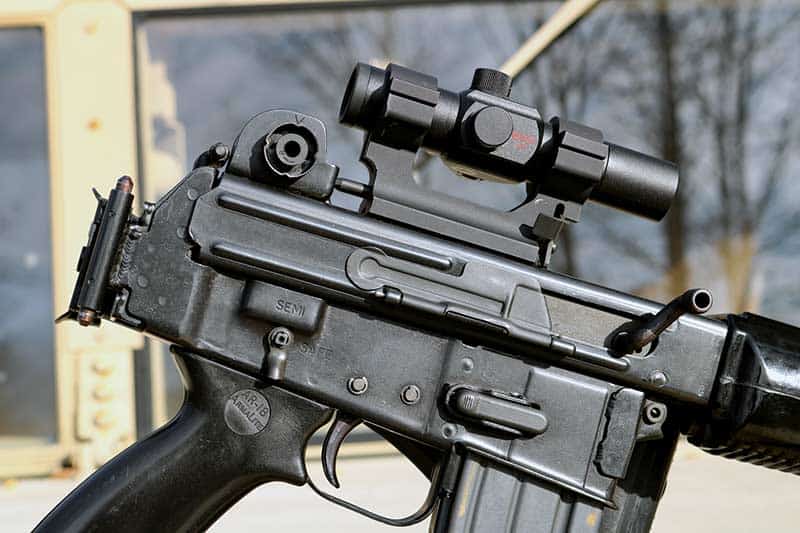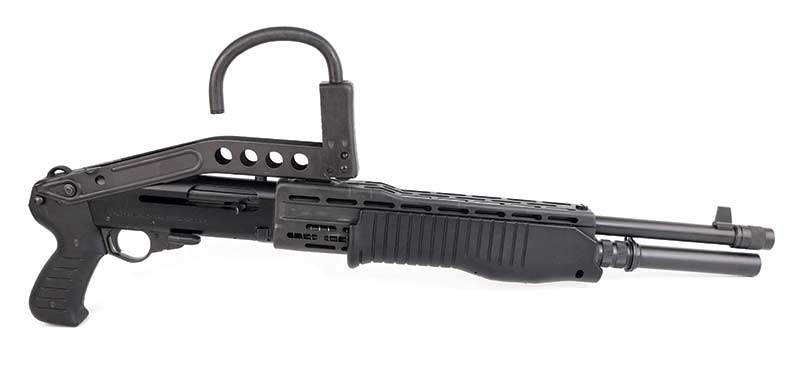Imagine you were invited to participate in a groundbreaking clinical trial. This isn’t testing out some radical new hair growth formula or Viagra knockoff. This is something important. Some hypothetical DARPA scientist is offering to turn you into the Terminator.
Yeah, THE Terminator. This guy will take your brain and transfer it into a Cyberdyne Systems Model 101 from the esteemed 1984 James Cameron movie. You’d weigh 600 lbs., and draw power from twin redundant miniaturized nuclear reactors. You’d be human flesh grown around a hyperalloy combat chassis. You’d be bulletproof, fast and immensely strong. Your sex life would undoubtedly take a hit, but you’d look like Arnold Schwarzenegger circa 1984. Would you do it? Think it over. I’ll wait.
Heck, yeah, you’d do it. We all would. It would be worth whatever pain, social stigma or operative risk just to stroll around your local Walmart looking terrifying. Just imagine how it might transform your typical workday. How awesome would it be to lean forward, my red mechanical eyes glowing behind a pair of killer shades, and say to the little old lady in the exam room, “Tell me about your hemorrhoids,” in Arnold’s unique Austrian patois?
Sadly, technology has not yet advanced far enough to transform me from a skinny 56-year-old, maturity-impaired gun writer into a hulking mechanical killing machine. However, I can still taste a bit of that Terminator ambiance. All you need is access to a fairly well-seasoned gun collection.
The Movie
The Terminator was a low-budget sleeper hit in 1984. The movie returned $78.3 million off of a $6.4 million budget. It also launched the careers of several well-known cinema personalities.
James Cameron wrote and directed it before going on to such epics as Titanic, True Lies and Avatar. Michael Biehn subsequently starred in Aliens, The Abyss, Tombstone, The Rock and Navy SEALs. Arnold Schwarzenegger eventually became, well, Arnold Schwarzenegger.
Cameron’s original vision for the narrative differed substantially from what we saw on the big screen. Biehn was originally cast as the Terminator, while Schwarzenegger was supposed to be the soldier from the future sent back to stop him. Per the original vision, the killing machine was an infiltrator designed to blend in. While patterning the Terminators off of hulking Austrian bodybuilders might not have made the most tactical sense, it certainly produced a superlative action movie.
Terminator’s Weapons
Only flesh will pass through the time displacement equipment, so you come through time naked and bereft of weapons. As the Terminator is encased in flesh, he gets to pass. For those of you who haven’t committed the dialogue to memory, as have I, here’s a rundown of the guns in the film …
The Terminator makes a beeline for a California gun shop, shoots the proprietor and leaves with an Uzi submachine gun, a Franchi SPAS-12 shotgun, an Armalite AR-180 rifle and an AMT Longslide .45. Per the backstory, the Terminator takes the Uzi and AR-180 back to his apartment and somehow converts them to full-auto.
The Long Guns
The Uzi submachine gun hit the streets in 1950, two years after Israel gained her independence. Developed by Major Uziel Gal, the Uzi was the answer to Israel’s desperate need for a rugged, reliable and effective domestically produced combat weapon. Now 10 million copies later, the Uzi is the most-produced SMG in human history.
The GI Uzi fires from the open bolt and feeds from either 25- or 32-round magazines. The gun can be had with either a folding steel stock or the detachable wooden sort. The Uzi is heavy at 7.72 lbs., and cycles at 600 rpm on full-auto.
The Franchi SPAS-12 shotgun was a solution in search of a problem. Produced in Italy from 1979 until 2000, some 37,000 copies rolled off the lines. The SPAS-12 was as alluring as Raquel Welch circa 1962 and as complicated as the manual for your new microwave. Capable of being run in either pump or auto, the SPAS-12 weighed just shy of 10 lbs. and packed 8+1 onboard. The top-folding stock looked cool but remained fairly inefficient.
The SPAS-12 had two independent manual safeties and was absolutely festooned with switches. If you don’t do it right, you can jack the action while switching between pump and auto so badly the gun has to be disassembled to rectify it. Ask me how I know this.
The SPAS-12 sold for around $1,500 new even back in the ’80s. The gun takes an engineering degree to run well but is, in competent hands, effective enough. However, there are a lot of more conventional autoloading shotguns that will do the same thing for a fraction of the cost. Should you find yourself with a SPAS-12, check the polymer recoil buffer before you shoot it. They get friable and fall apart when they get old.
The ArmaLite AR-180 was Gene Stoner’s next-generation replacement for the AR-15. Designed in 1963 and released for service in 1969, AR-180 receivers were pressed out of sheet steel and could be produced more easily and cheaply than the aluminum AR-15 sort. The biggest difference between the two guns was the operating system.
The direct gas impingement system of the AR-15 consisted of little more than a length of hydraulic tubing. That of the AR-180 incorporates a short-stroke gas piston action that runs cleaner than the simpler, lighter AR-15. This same basic mechanism has been copied in the FN SCAR-16, the HK G-36 and the SIG M-5 Spear.
Terminator’s Pistol
The Terminator’s handgun of choice was the AMT Hardballer Longslide .45. This ballin’ hogleg was a regular staple in the Shotgun News magazines of my youth. I seem to recall they retailed for maybe $325 apiece back in the 1980s. These stainless-steel guns came as a standard Government model, a stubby concealed carry version called the Skipper and then the distinctive Hardballer Longslide.
The Terminator’s Longslide included a radical new laser sight that required 10,000 volts for activation and 1,000 volts for reliable operation. The power pack rode inside Arnold’s field jacket, while the wiring for the activation switch snaked through his field jacket for surreptitious operation by his weak hand. While lasers are ubiquitous findings on our modern tactical firearms, such stuff was radical indeed back then.
The controls on the Longslide were oversized, effective and left-side-only. The gun fed from standard seven-round magazines. The Longslide ran just like any other M1911 pistol, only longer.
As I really wanted to pack heat like the Terminator, I dropped the Longslide into a proper IWB holster for a long day in the clinic. Carrying the gun is like shoving a yardstick into your pants, but the inimitably crisp M1911 trigger helps make up for it on the range. Magazine changes set the standard for everything else. My Longslide has been uniformly reliable with everything I’ve fed it.
Recoil is more a shove than a snap, and the extended sight radius enhances control and accuracy. The gun’s weight and its elongated snout help keep recoil and muzzle flip in check. After a little trigger time, I can see why the Terminator chose it.









